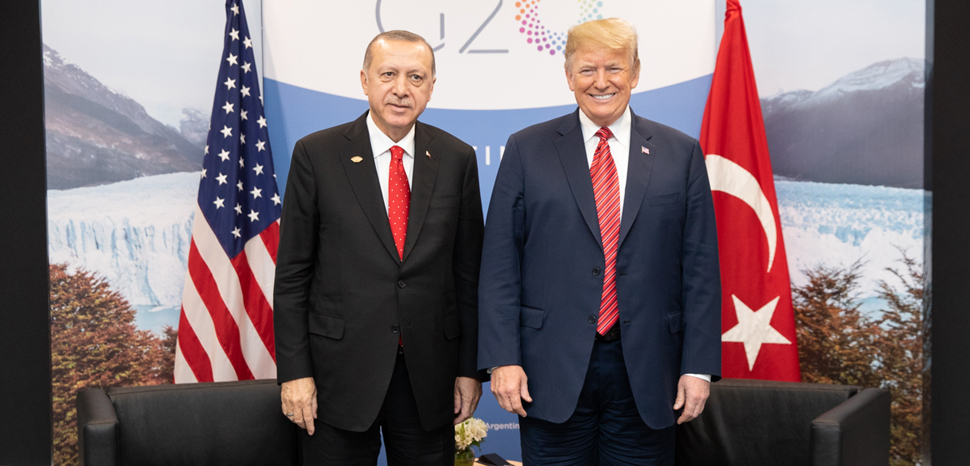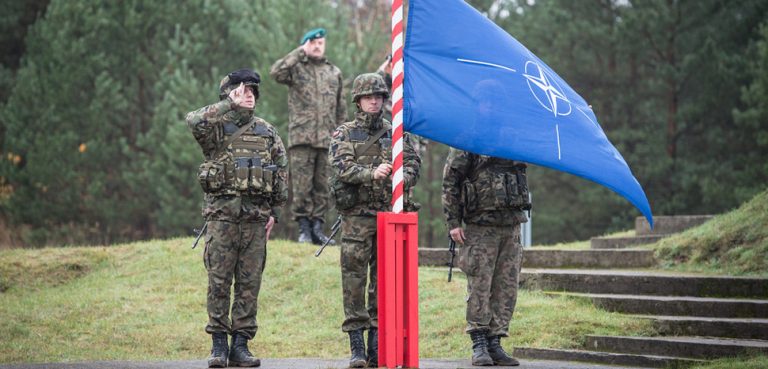On the morning of Tuesday October 9, 2019, Turkish armed forces launched ‘Operation Peace Spring,’ a military offensive utilizing air and land combat operations for the expressed goal of creating a 30-km “safe zone” in northeastern Syria that would effectively eliminate Kurdish rebels in the region, who were the target, and relocate refugees from the Syrian civil war.
The animosity between Turkey’s government and regional ethnic factions is nothing new. In fact, it dates back to well before President Recep Tayyip Erdogan’s rise to power or the start of the Syrian civil war. After World War 1 and the rise of independent Arabic states, the Kurds were left without a homeland. They were mostly scattered across the northern half of the Middle East, building communities in Iran, Iraq, Syria, and Turkey.
As a minority group in a region known for religious and ethnic persecution, they regularly faced challenges to their survival. In the 1980s, a Kurdish nationalist group known as the PKK rose to political power in Turkey, calling for the establishment of an independent ethnic state. The disagreements between the PKK and the Turkish government eventually led to violence, as the group began a campaign of terrorism against the Turkish military that has lasted to this day. The United States and European Union, as well as Turkey, regard the PKK as a terrorist organization.
As Syria was plunged into civil war and Damascus struggled to keep control of the countryside, an affiliate of the PKK, the People’s Protection Units (YPG), secured large portions of the nation’s north, near the Turkish border. As the war went on and the rise of the Islamic State changed the diplomatic dynamic of the area, the United States began actively supporting a coalition of Syrian rebels, led primarily by the Kurds, known as the Syrian Democratic Forces (SDF). Losing over 10,000 men during the fight against ISIS, Washington used the group as its ground forces against the Islamic State in Syria.
Since at least 2017, the Turks have been hinting at a major military operation aimed at removing the Kurds in the area. A source speaking with Axios recalled that Trump confided to Erdogan that while the U.S. wouldn’t tolerate any aggression in the region while its forces were there, it wouldn’t necessarily be an issue for him once they were pulled out.
“Trump basically said, ‘Look, if you want it you own it, but don’t come looking to me for help. You can take it, it’s yours,'” the former official recalled of that 2017 conversation between the two leaders. This contradicted, according to the source, what Trump had been telling Ankara in the months prior. “It was pretty blustery,” the source said, “Trump was like, ‘I don’t want to be there in the first place, but you know our guys are there. They don’t take s–t. We’re there. Maybe I don’t want to be there, but if you do a border crossing and come into conflict with our guys, they are way better equipped and you don’t want to do that.'” Trump’s message, the source said, was “don’t mess with the U.S. military.”
The media frenzy following Turkey’s attack was sporadic and cluttered, as was the diplomatic community’s response. Within a few days, the European Union had condemned the aggression as France, Germany, and the United Kingdom indefinitely halted all arms exports to Ankara, to which Turkish President Recep Tayyip Erdogan responded by threatening to open his nation’s borders with Europe and release a flood of over 3 million refugees.
The world was then further shocked when U.S. Defense Secretary Mark Esper announced American forces would be pulled out of Syria, effectively leaving their Kurdish allies without any assistance as they continued to be pushed back by the Turkish army. Needless to say, Republicans and Democrats alike weren’t too fond of the move.
“A precipitous withdrawal of U.S. forces from Syria would only benefit Russia, Iran, and the Assad regime,” Senate Majority Leader and key administration ally Mitch McConnell said in a statement earlier this week. “And it would increase the risk that ISIS and other terrorist groups regroup.” South Carolina Sen. Lindsay Graham even went so far as to go on Fox News to join the chorus against the action. “This impulsive decision by the president has undone all the gains we’ve made, thrown the region into further chaos, Iran is licking their chops, and if I’m an ISIS fighter, I’ve got a second lease on life,” the senator said. “I will do everything I can to sanction Turkey’s military and their economy if they step one foot into Syria. I hope I’m making myself clear how shortsighted and irresponsible this decision is.”
In response to the attack, the Trump administration authorized sanctions against several Turkish government officials, ministries, and raised steel tariffs in an effort to destabilize the economy enough to get Erdogan to call off the offensive. In the Senate, a bipartisan partnership between Republican Lindsay Graham and Democrat Chris Van Hollen produced a bill that would provide additional sanctions on top of the ones issued by President Trump.
With the United States effectively abandoning their Kurdish allies in the face of Ankara’s military incursion, the YPG and the retreating rebels made the critical decision to invite Assad’s government and Russian military units to take up positions previously held by the U.S., severely undermining American interests in the area. The Syrian army and its Russian allies, who regard Turkey’s invasion as a direct threat to Damascus’s national sovereignty, quickly accepted and moved into the province of Raqqa, occupying the towns of Manbij, Tal Tamr, Ein Issa, and Tabqa. “There is an understanding between SDF and Damascus — a military agreement only,” Badran Ciya Kurd, a senior Kurdish official, told the press. Within hours, Turkish-backed fighters, as well as their own military special forces, began an assault on Manbji.
Against the backdrop of the military showdown, both Russia and the United States worked to de-escalate the conflict. President Trump sent several communiques to Erdogan, including one leaked to the press that was confirmed to be authentic by the White House.
“You don’t want to be responsible for the slaughtering of thousands of people, and I don’t want to be responsible for destroying the Turkish economy,” he wrote. “History will look upon you favorably if you get this done the right and humane way,” Trump continued. “It will look upon you forever as the devil if good things don’t happen.” “Don’t be a tough guy. Don’t be a fool!” he said, adding that the SDF’s commander was willing to negotiate.
A Turkish official, speaking anonymously, told the London-based Middle East Eye that Erdogan threw Trump’s letter in the garbage. “We just dumped his letter to the trash,” the official said, adding: “The date on the letter is 9 October, the same day we began Operation Peace Spring. Our president gave the best response by launching the operation on the same day at 4pm.”
Finally, after arriving in Ankara and engaging in hours of negotiations, Vice President Mike Pence announced to the media that a cease-fire agreement had been reached.
“Today the United States and Turkey have agreed to a ceasefire in Syria. The Turkish side will pause Operation Peace Spring in order to allow for the withdrawal of YPG forces from the safe zone for 120 hours.” All military operations under Operation Peace Spring will be paused and Operation Peace Spring will be halted entirely on completion of the withdrawal,” he continued.
Full text of joint Turkey-US statement:
- The US and Turkey reaffirm their relationship as fellow members of NATO. The US understands Turkey’s legitimate security concerns on Turkey’s southern border.
- Turkey and the US agree that the conditions on the ground, northeast Syria in particular, necessitate closer coordination on the basis of common interests.
- Turkey and the US remain committed to protecting NATO territories and NATO populations against all threats with the solid understanding of “one for all and all for one”.
- The two countries reiterate their pledge to uphold human life, human rights, and the protection of religious and ethnic communities.
- Turkey and the US are committed to D-ISIS/DAESH activities in northeast Syria. This will include coordination on detention facilities and internally displaced persons from formerly ISIS/DAESH-controlled areas, as appropriate.
- Turkey and the US agree that counter-terrorism operations must target only terrorists and their hideouts, shelters, emplacements, weapons, vehicles and equipment.
- The Turkish side expressed its commitment to ensure safety and well-being of residents of all population centers in the safe zone controlled by the Turkish Forces (safe zone) and reiterated that maximum care will be exercised in order not to cause harm to civilians and civilian infrastructure.
- Both countries reiterate their commitment to the political unity and territorial integrity of Syria and UN-led political process, which aims at ending the Syrian conflict in accordance with UNSCR 2254.
- The two sides agreed on the continued importance and functionality of a safe zone in order to address the national security concerns of Turkey, to include the re-collection of YPG heavy weapons and the disablement of their fortifications and all other fighting positions.
- The safe zone will be primarily enforced by the Turkish Armed Forces and the two sides will increase their cooperation in all dimensions of its implementation.
- The Turkish side will pause Operation Peace Spring in order to allow the withdrawal of YPG from the safe zone within 120 hours. Operation Peace Spring will be halted upon completion of this withdrawal.
- Once Operation Peace Spring is paused, the US agrees not to pursue further imposition of sanctions under the Executive Order of October 14, 2019, Blocking Property and Suspending Entry of Certain Persons Contributing to the Situation in Syria, and will work and consult with Congress, as appropriate, to underline the progress being undertaken to achieve peace and security in Syria, in accordance with UNSCR 2254. Once Operation Peace Spring is halted as per paragraph 11 the current sanctions under the aforementioned Executive Order shall be lifted.
- Both parties are committed to work together to implement all the goals outlined in this Statement.




